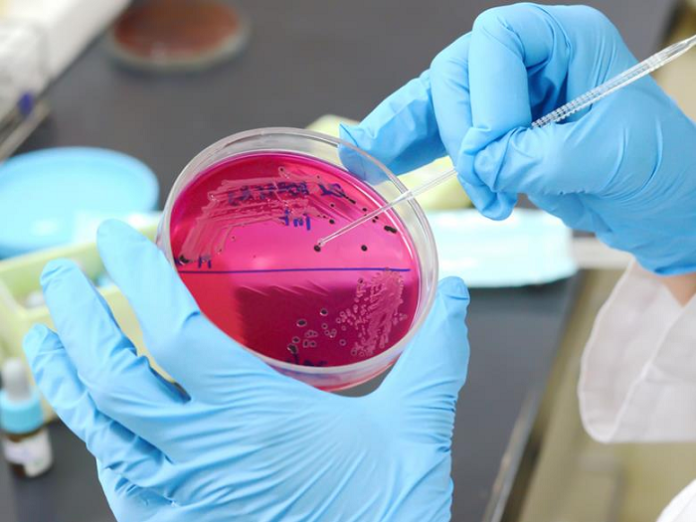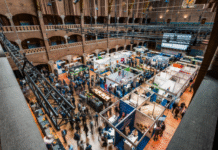
Researchers at McMaster University in Canada have created a new packaging tray that can signal when Salmonella or other dangerous pathogens are present in packages of raw or cooked food such as chicken, Packaging Europe reported. The new technology will enable producers, retailers and consumers to tell, in real-time, if the contents of a sealed food package are contaminated without having to open it, say the developers, the researchers say.
The prototype tray, shaped like a shallow boat, is lined with a food-safe reagent that allows a built-in sensor to detect and signal the presence of Salmonella. The technology can readily be adapted to test for other common food-borne contaminants, such as E. coli and Listeria, it is claimed. The research has been supported by Toyota Tsusho Canada Inc., an indirect subsidiary of Toyota Tsusho Corporation in Japan.
“This is something that can benefit everyone,” says researcher Akansha Prasad, the co-lead author of a paper that describes the invention, published recently in the journal Advanced Materials. “We’re hoping this technology will save lives, money and food waste.”
The sloped sides of the tray direct juices to a sensor embedded in a window at the bottom. Without the need for any additional lab work, users can scan the underside of the sealed package with a cell phone and know immediately whether the food is contaminated.
Having instant access to such information would allow public health authorities, producers and retailers to trace and isolate contamination quickly, reducing potentially serious infections while also cutting back significantly on food waste by identifying precisely which lots of food need to be recalled and destroyed, say the researchers. This compares favourably with today’s often broad recalls that end up wasting unspoiled foods.
Globally, there are about 600 million cases of foodborne illness every year, largely attributed to the consumption of pathogen-contaminated food products. The researchers believe that by protecting consumers from contaminated foods, the trays have the potential to create significant health-care savings.
This work is part of McMaster’s broader Global Nexus School for Pandemic Prevention & Response. Co-author Tohid Didar, an associate professor of mechanical and biomedical engineering, says package-based sensors that measure other conditions such as humidity are already becoming common in Japan and elsewhere.
Didar said the McMaster research team on the Lab-in-a-Package project has worked to make the new contamination sensor as adaptable and economical as possible, knowing food producers are under pressure to keep costs low.
“It’s really just a matter of time before technology like this becomes common all over the world,” Didar says. “Now that we’ve shown that one kind of food package can reveal contamination without even being opened, we can adapt it to other forms of packaging for other types of foods.”
“Being able to combine packaging and Salmonella detection in one system is already very promising. It also shows that we can add sensing probes for other food-borne pathogens to the same system so the package will check for all of them at once. That’s the next step for us, and we’re already working on it,” said Yingfu Li, another member of the research team.
(First published in Packaging Europe. Republished with permission)
This article was created in collaboration with AIPIA (the Active and Intelligent Packaging Industry Association). For a full update on active and intelligent packaging, visit the AIPIA World Congress (co-organized by Packaging Europe) in Amsterdam on 14-15 November. The only smart packaging event covering the entire technology spectrum, the World Congress is a meeting place for the global active and intelligent packaging industry where brand owners, innovators, and other stakeholders can network and see and discuss the latest trends and innovations. Register to attend here.










